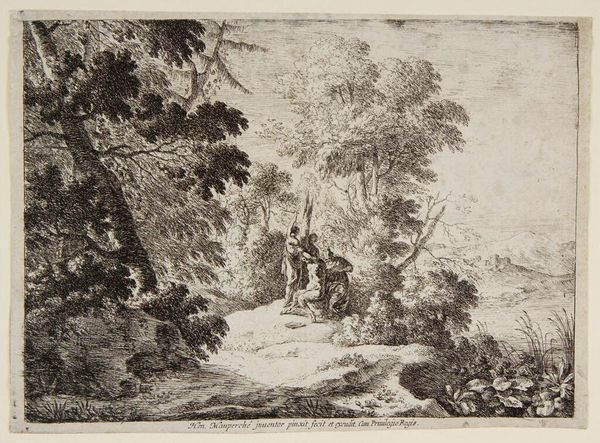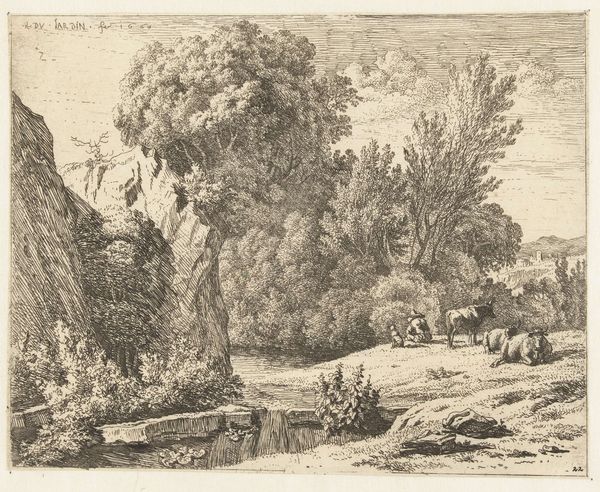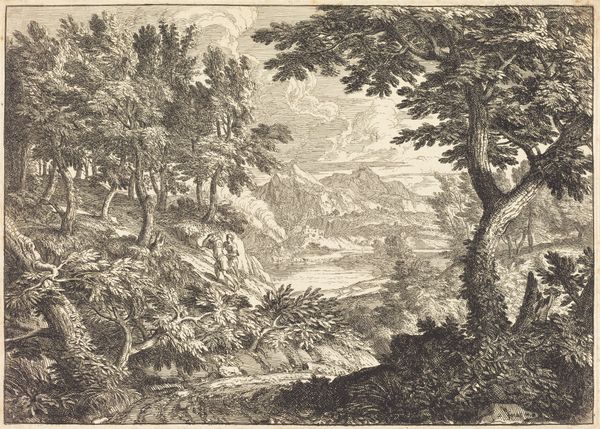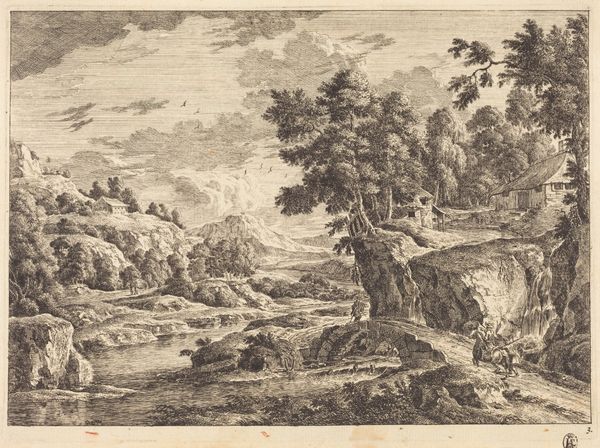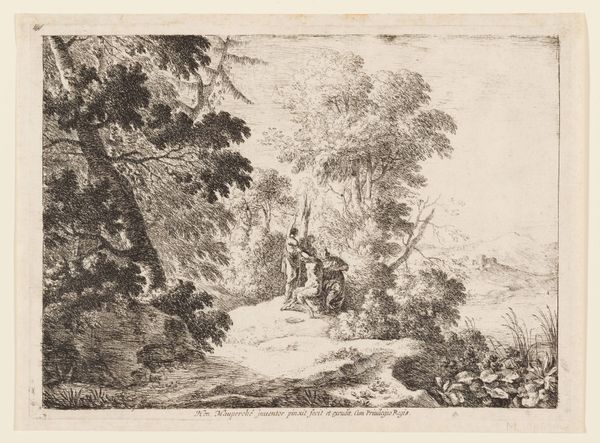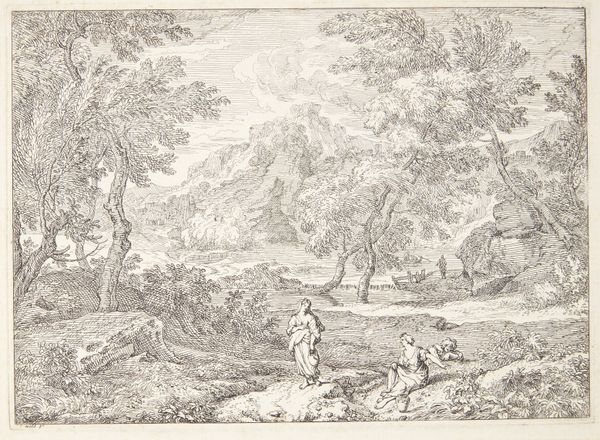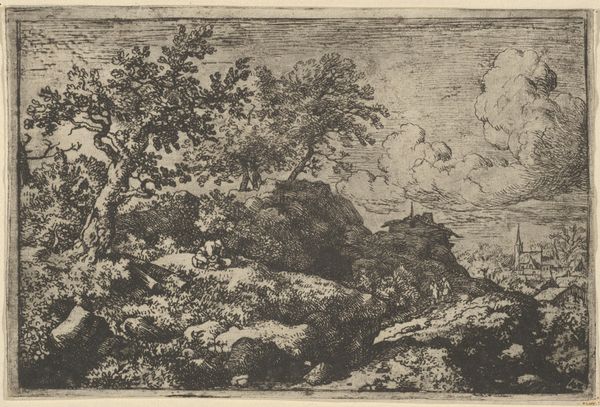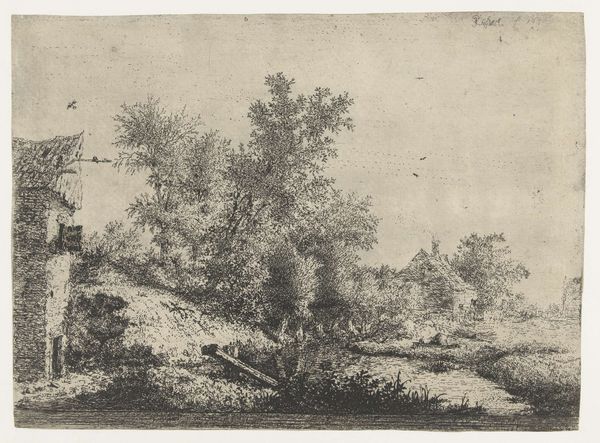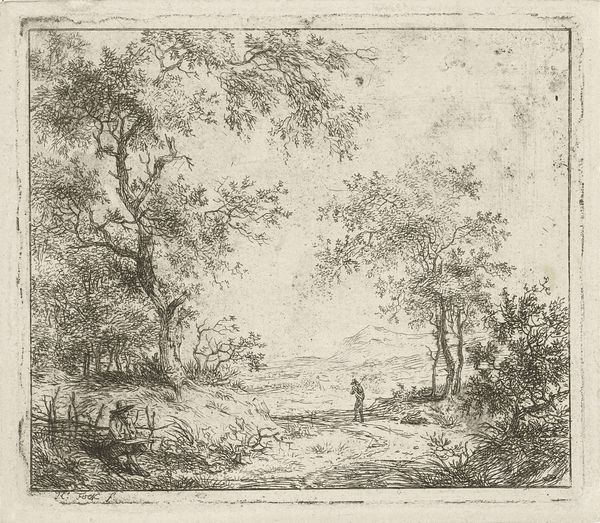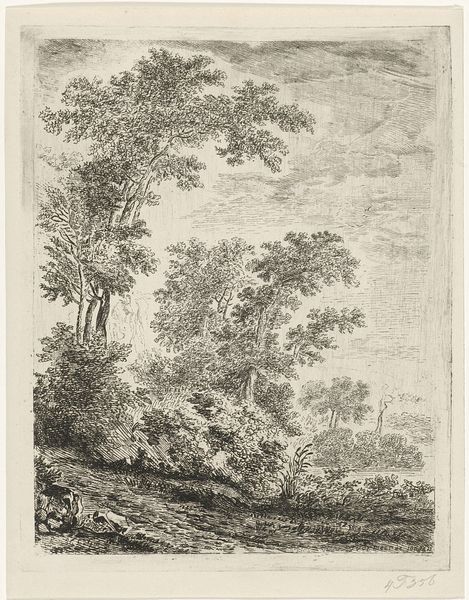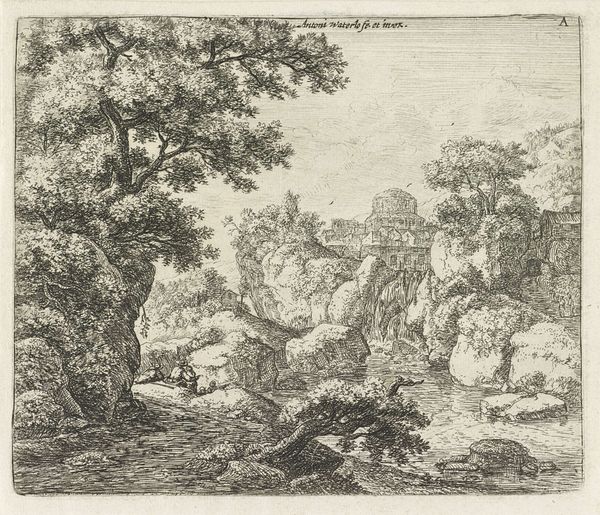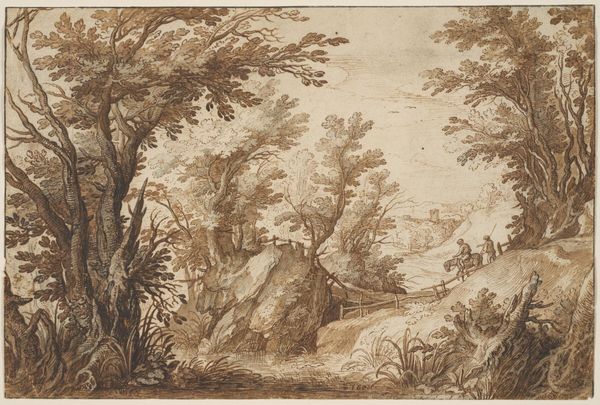
drawing, print, etching, paper
#
drawing
#
allegory
# print
#
etching
#
landscape
#
paper
#
history-painting
Dimensions: 186 × 259 mm (image); 198 × 270 mm (plate); 200 × 273 mm (sheet)
Copyright: Public Domain
Henri Mauperché made "Flaying of Marsyas" using etching, a printmaking technique that relies on acid to bite into a metal plate, leaving behind delicate lines. The process begins with coating a copper or zinc plate with a waxy, acid-resistant ground. The artist then draws through this ground with a sharp needle, exposing the metal beneath. When the plate is immersed in acid, the exposed lines are etched, creating grooves. These grooves hold ink, which is then transferred to paper under high pressure, resulting in a print with fine details and tonal variations. The intricate landscape and the dramatic scene of Marsyas being flayed are rendered with a remarkable level of detail. The process allows for a high degree of control, enabling the artist to create a range of textures and effects. The dense foliage of the trees, the rocky terrain, and the delicate shading of the figures all speak to the skill involved in both drawing and the chemical process of etching. The choice of etching as a medium would have allowed Mauperché to produce multiple copies of his work, facilitating its distribution and accessibility, challenging traditional distinctions between fine art and craft.
Comments
No comments
Be the first to comment and join the conversation on the ultimate creative platform.
